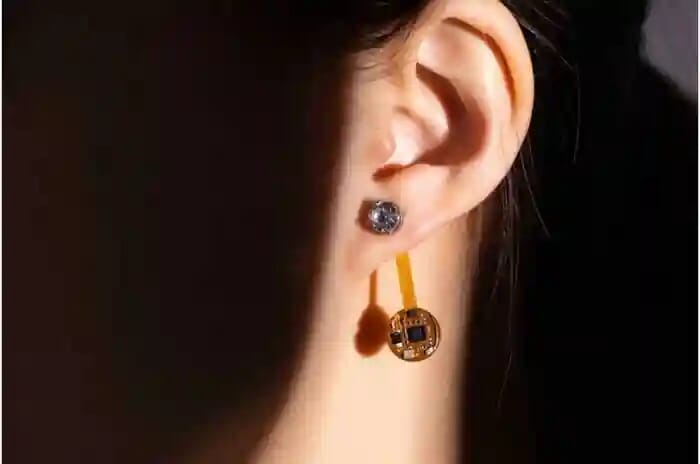In the ever-evolving landscape of wearable technology, a groundbreaking innovation has emerged from the labs of the University of Washington (UW): smart thermal and wireless earrings designed to monitor various health parameters. This sophisticated jewelry claims to outperform smartwatches in detecting body temperature. Researchers suggest these earrings can be adapted to monitor signs of stress and fever, track eating and exercise patterns, and even monitor signs of ovulation.

Lead researcher Qiuyue (Shirley) Xue, who often wears a smartwatch herself, found traditional wearable accessories lacking in style and comfort.
"I also use a smartwatch to monitor my personal health, but many perceive smartwatches as unfashionable or too bulky and uncomfortable. I also enjoy wearing earrings, so we began contemplating unique ways to measure skin temperature," said the UW doctoral student, as quoted by detikINET from The Debrief.
This line of thinking led Xue to the idea of creating smart earrings capable of monitoring human body temperature through direct contact with the earlobe.
"We found that detecting skin temperature in the earlobe, rather than in the hand or wrist, is much more accurate. It also provides a sensor location that is less affected by ambient temperature," she added.
Beyond the potential to monitor exercise patterns and stress through subtle changes in body temperature, researchers also highlight one particularly useful function that smart earrings might offer, which smartwatches cannot: tracking ovulation.
"Current wearable devices like the Apple Watch and Fitbit have temperature sensors, but they only provide average daily temperatures, and temperature readings from the wrist and hand are too noisy to track ovulation. So, we want to explore unique applications for earrings, especially applications that might appeal to women and anyone interested in fashion," said Xue.
Furthermore, the ability to compare skin temperature with room temperature could provide these smart earrings with the capability to determine whether the wearer is experiencing a fever, an unfit body temperature, or merely influenced by their surroundings.
Deputy team leader Yujia (Nancy) Liu affirmed their readiness to prototype the earrings. However, they acknowledged the challenges of creating a lightweight, robust product capable of collecting useful data and enduring without frequent recharging.
"It's a difficult balance to strike. Typically, if you want longer battery life, you need a larger battery. But you also have to compromise on size because making it wireless requires more energy," she noted.
After several initial designs, the version published in the journal "Proceedings of the ACM on Interactive, Mobile, Wearable, and Ubiquitous Technologies," titled 'Thermal Earring: Low-power Wireless Earring for Longitudinal Earlobe Temperature Sensing,' features earrings resembling paper clips equipped with Bluetooth chips for communication, rechargeable batteries, and two separate temperature sensors.
These smart earrings boast a robust battery life, capable of lasting up to 28 days, thanks to intelligent wireless communication methods.
"Instead of connecting it with a device, which consumes more power, these smart earrings use Bluetooth advertisement mode. The transmission the device sends to indicate it can be connected, after reading and sending the temperature, then the earrings go into sleep mode to save power," Liu added.
In executing their 'smart' functions, the device's temperature sensors are attached to the earlobe by opposing magnets. Simultaneously, the dangling part contains a separate sensor measuring room temperature. These two readings, according to the researchers, can provide significant insights into the wearer's health and well-being.
One potential application for this device involves more accurate fever monitoring. Researchers monitored the earlobe temperature of 20 healthy patients and five feverish patients throughout the day. The results showed a significant difference between the daily temperatures of healthy and sick patients, indicating the potential for continuous fever monitoring.
"In the medical field, we often monitor fever to assess therapy response to see, for example, if antibiotics are working on an infection," said Dr. Mastafa Springston, a clinical instructor in the Department of Emergency Medicine at the UW School of Medicine.
"Long-term monitoring is a way to improve fever detection sensitivity because they can rise and fall throughout the day," he added.
Although the current prototype is not yet commercially available, the researchers behind its creation say its appearance can be personalized with customized resin shapes like flowers or adorned with specific gemstones without compromising temperature detection accuracy.
In future designs, the researchers aim to explore ways to adapt smart earrings to run on solar power or even kinetic energy generated by the jewelry's movement.
They also hope to investigate other jewelry options that can work in tandem with smart earrings to perform all kinds of medical analyses.



